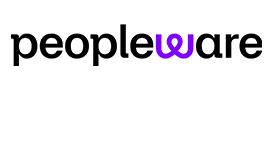Charles Watson of injixo lays out four mistakes commonly encountered in busy times and how clever planning can help avoid these.
Busy times like the holiday season are a critical time of year for contact centres. One mistake can have devastating effects on service levels and ultimately on your customer experience.
In this article, you’ll learn which mistakes to avoid if you want to achieve your service level.
Mistake #1: Lack of Planning
This may sound strange, but it actually happens very often. Ask yourself: What percentage of your team’s time is spent on planning versus real-time management? If you don’t know this number or don’t have an active strategy to manage this, you may be eating up way too much of your time in managing real time instead of planning.
I once took over a workforce management team where 20 of the 25 analysts worked in real-time management. One of the reasons for that was that we were a 7-day-a-week operation and thus had to cover a lot of hours with real-time managers. The 20 to 5 ratio was a given at that contact centre. Nobody had ever challenged it. But when you organise that way, you have 80% of your resources only looking at what is happening now. The problem with this is that in real-time management you have fewer levers.
A better way to staff is to have 80% of your resources in planning and 20% in real-time management. There are a number of ways to achieve this ratio. We’ll cover workforce management organisational structures in a future blog post.
For the holiday season, you should put special emphasis on planning – planning each week, each day, and each interval the best you can. The more resources you invest in planning, the better you know what to expect. As a consequence, your staffing will get better and service levels will improve. Additional advice: Publish the expected service levels and risks for each day (and within the day) for everyone to see.
How to Plan Better
Start by having a plan for the week. What are your projected service levels each day next week? Are there times of the day that are understaffed and at risk? Meet with the operations team the middle of the week before and highlight all the gaps and risks. Lay out your recommendations. Do you need schedule changes? Do you need overtime? Do you need to move offline activities to a different part of the day?
Then, lay out the options for operations and highlight how successful they are in helping to execute the plan. This last step is critical if the centre doesn’t achieve the desired service levels in the end. If it is because the operations team didn’t follow your recommendations, you can call this out when you’re doing your reports. The objective isn’t to point the finger, but it helps with driving continuous improvement.
Mistake #2: Lack of a Contingency Plan
The intraday performance only matches the forecast perfectly if every variable that went into it is accurate. The reality is your volume and AHT forecasts will always have some inaccuracies, and agents will not always be available as expected. This inevitably leads to smaller or larger deviations throughout the day. If you don’t devise reaction strategies for these deviations in advance which you can execute quickly in case of an emergency, your service levels will go down.
Align with your partners in operations about what actions you’ll take if service levels are 5 points below goal, 10 points below goal, or worse. The actions should be more aggressive as the service level goes down. A simple example of this is that you cancel all non-critical activities when service level is 5 points below goal and you cancel all offline activities when you go 15 points below goal.
What are non-critical activities? That’s for you to decide and will be different by call centre, and I’m sure workforce management and operations will have different definitions. This is why you need to align on these parameters in advance. If something happens and you don’t know how to react because you are not prepared, you will waste precious time while calls are in queue.
Mistake #3: Not Managing Leadership Communication
Managing service levels is a laborious and time-consuming task. Compared to that, communication and expectation-setting can feel like a “nice to have” that can be pushed away if stress levels are rising. However, in reality, communication and expectation-setting is critical – even more so during the busy season.
Let’s face it, we have to manage leadership expectations. If we don’t, it’s much more likely they will start micromanaging us. They have other leaders to report to, or clients they have to update on performance. Making sure that leaders have the information they need actually gives you more space to do the work you need to do. Be proactive here.
I like to reach out to leadership before the season starts and suggest an update cadence. For example, I’ll suggest daily service level updates at the end of each day with commentary on the variances to performance. I also find it very useful to let them know they’ll receive an update when service levels hit various thresholds. I’ll give them a call if service levels are below 70% with some high-level indicators to what’s driving performance.
By setting expectations upfront, they can know confidently that they’ll be in the loop and they’ll be less likely to reach out to you because they don’t know what’s going on. Executives don’t like to be surprised.
Mistake #4: Relying on Manual Reskilling
When the need arises in daily operations to reskill agents, many planners do it manually instead of automating the process. Depending on your technology, you may not have many options here. But generally, call routing technology can be set up so you can automate most, if not all, routing changes.
If you wait for a queue to reskill, you lose precious time. It’s also error-prone and can cause issues, not only with the initial reskilling, but also with resetting skills back to the base at the end of the day. You also run into the issue of slow execution as you engage with operations on the reskilling. How often are you told you can’t reskill an agent because “they aren’t ready”, or “they haven’t taken that call type in 3 months”? It can be really slow and tedious to execute if you’re trying to negotiate. Set this up in advance and let the technology automatically route the calls.
There are a lot of ways you can execute this based on your business. If you’re simply looking to drive high occupancy and fully utilise staff, you can flat out dual skill all agents. This means you never have a call queueing in one skill and an agent sitting idle in another. If you want to cross-utilise but more as a contingency so the primary agents get more of their primary call types, you can single skill the agents and have the calls overflow to another skill based on certain criteria.
Here are two examples you can use:
- Overflow based on estimated wait time – Calls flow to another skill based on the estimated wait time of the core call type. So you may have a customer service call overflow to sales if the estimated wait time in the customer service skill is more than 5 minutes, for example.
- Overflow based on idle agents – Let’s say you have a premium group that you overstaff. You can use excess availability here to support lower-skill queues. Set the threshold for the simpler call to overflow to the premium queue based on 2 (or more) agents being available. You can set the threshold higher or lower based on how aggressive you want to be here. But the objective is to keep calls flowing, but always keep a few agents available for that next premium call that comes in.
Conclusion
You can avoid the four common mistakes above by taking the time to plan in advance, lay out your contingencies and take care of leadership communication. Get together with your counterparts in operations and align on your rules of engagement. This upfront work will help you execute quickly and efficiently during your busy season.
This blog post has been re-published by kind permission of Peopleware – View the Original Article
For more information about Peopleware - visit the Peopleware Website
Call Centre Helper is not responsible for the content of these guest blog posts. The opinions expressed in this article are those of the author, and do not necessarily reflect those of Call Centre Helper.
Author: Peopleware
Published On: 28th Nov 2018 - Last modified: 2nd Jan 2019
Read more about - Guest Blogs, Peopleware, Service Level






 Peopleware is the award-winning, multi-channel cloud workforce management application for contact centers and customer support. Over 300 customers, ranging in size from 50 to over 4,000 seats, trust Peopleware to bring work and demand in perfect balance while embracing the constant change in their business. With Peopleware, you spend less time and effort on manual forecasting and scheduling, while maximizing efficiency and focusing on what really matters: your people and customers.
Peopleware is the award-winning, multi-channel cloud workforce management application for contact centers and customer support. Over 300 customers, ranging in size from 50 to over 4,000 seats, trust Peopleware to bring work and demand in perfect balance while embracing the constant change in their business. With Peopleware, you spend less time and effort on manual forecasting and scheduling, while maximizing efficiency and focusing on what really matters: your people and customers.




























